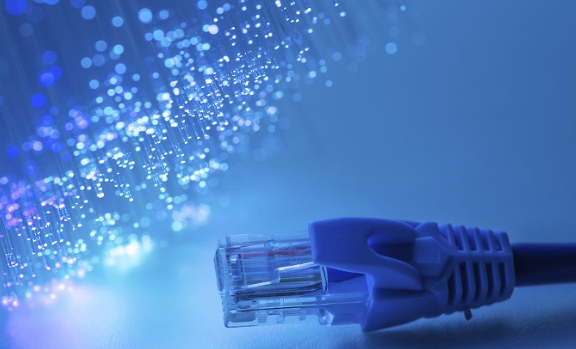ᐃᑭᒋᐊᕐᕕᖓ ᑲᑉᐳᑎᓗᒍ %u.
ᐃᑭᒋᐊᕐᕕᖓ ᑲᑉᐳᑎᓗᒍ %u.
ᐃᑭᒋᐊᕐᕕᖓ ᑲᑉᐳᑎᓗᒍ %u.
ᐃᑭᒋᐊᕐᕕᖓ ᑲᑉᐳᑎᓗᒍ %u.
ᐃᑭᒋᐊᕐᕕᖓ ᑲᑉᐳᑎᓗᒍ %u.
ᐃᑭᒋᐊᕐᕕᖓ ᑲᑉᐳᑎᓗᒍ %u.
2024-04-18 2790
Ethernet Cabling: Copper vs. Fiber - Which is the Better Choice?
When it comes to Ethernet cabling, the choice between copper and ᐃᑭᒋᐊᕐᕕᖓ ᑲᑉᐳᑎᓗᒍ %u.s often becomes a crucial decision. Both types of cables have their unique strengths and weaknesses, making it essential to understand their respective characteristics before making a selection. In this article, we delve deeper into the pros and cons of both copper and fiber cables to help you make an informed decision based on your specific needs and scenarios.

Copper Cables: Stability, Reliability, and Cost-Effectiveness
Copper cables have long been the staple of Ethernet cabling, renowned for their stability and reliability. In household and small office environments, copper cables are the preferred choice due to their excellent transmission performance and straightforward installation process. With different grades available, such as CAT5, CAT5e, CAT6, and CAT6A, copper cables can cater to a wide range of networking needs, ensuring smooth internet connectivity for users.
Moreover, copper cables offer a cost-effective solution compared to ᐃᑭᒋᐊᕐᕕᖓ ᑲᑉᐳᑎᓗᒍ %u.s. They are generally ᐃᑭᒋᐊᕐᕕᖓ ᑲᑉᐳᑎᓗᒍ %u. affordable, making them suitable for those with limited budgets. Additionally, the installation and maintenance of copper cables are relatively simple, with users able to easily handle tasks like crimping connectors and connecting devices.
However, copper cables do have some limitations. Firstly, their transmission distance is relatively limited, typically not exceeding 100 meters. Secondly, when it comes to high-speed data transmission, copper cables can be susceptible to electromagnetic interference, leading to signal degradation and compromised transmission quality.
ᐃᑭᒋᐊᕐᕕᖓ ᑲᑉᐳᑎᓗᒍ %u.
Fiber Optic Cables: High Speed, Low Latency, and Long-Distance Transmission
Fiber optic cables, on the other hand, offer a high-performance alternative with their capabilities for high-speed, low-latency transmission and long-distance connectivity. Utilizing light signals for data transmission, ᐃᑭᒋᐊᕐᕕᖓ ᑲᑉᐳᑎᓗᒍ %u.s boast greater bandwidth and higher transmission rates, making them ideal for modern network applications that demand high bandwidth.
Furtherᐃᑭᒋᐊᕐᕕᖓ ᑲᑉᐳᑎᓗᒍ %u., ᐃᑭᒋᐊᕐᕕᖓ ᑲᑉᐳᑎᓗᒍ %u.s excel in terms of transmission distance. Single-mode fiber cables, for instance, can achieve transmission distances of up to 100 kilometers, significantly extending the reach of network connectivity. This makes ᐃᑭᒋᐊᕐᕕᖓ ᑲᑉᐳᑎᓗᒍ %u.s a preferred choice for large enterprises, data centers, and scenarios that require long-distance communication.
ᐃᑭᒋᐊᕐᕕᖓ ᑲᑉᐳᑎᓗᒍ %u.
However, ᐃᑭᒋᐊᕐᕕᖓ ᑲᑉᐳᑎᓗᒍ %u.s come with their own set of challenges. Firstly, their installation and maintenance are relatively complex. Fiber optic cables require active equipment to convert light signals into electrical signals, and any interruption in power supply can affect the entire network. Additionally, the splicing and termination of ᐃᑭᒋᐊᕐᕕᖓ ᑲᑉᐳᑎᓗᒍ %u.s require specialized skills and equipment, increasing the technical difficulty and maintenance costs.
How to Make the Choice?
When deciding between copper and ᐃᑭᒋᐊᕐᕕᖓ ᑲᑉᐳᑎᓗᒍ %u.s, it is crucial to consider your specific needs and scenarios. For home and small office environments, copper cables may be a sufficient and cost-effective solution. However, for large enterprises, data centers, or scenarios that require long-distance transmission or high bandwidth, ᐃᑭᒋᐊᕐᕕᖓ ᑲᑉᐳᑎᓗᒍ %u.s may be a better choice.
Moreover, it is essential to consider factors such as network architecture, device compatibility, and future scalability. When selecting a cable type, ensure that it is compatible with your existing equipment and future expansion plans to achieve optimal network performance and stability.ᐃᑭᒋᐊᕐᕕᖓ ᑲᑉᐳᑎᓗᒍ %u.
In conclusion, both copper and ᐃᑭᒋᐊᕐᕕᖓ ᑲᑉᐳᑎᓗᒍ %u.s have their advantages and disadvantages, and the best choice depends on your specific requirements and scenarios. By understanding their respective characteristics and weighing them against your needs, you can make an informed decision that will contribute to the efficiency and stability of your Ethernet cabling system.